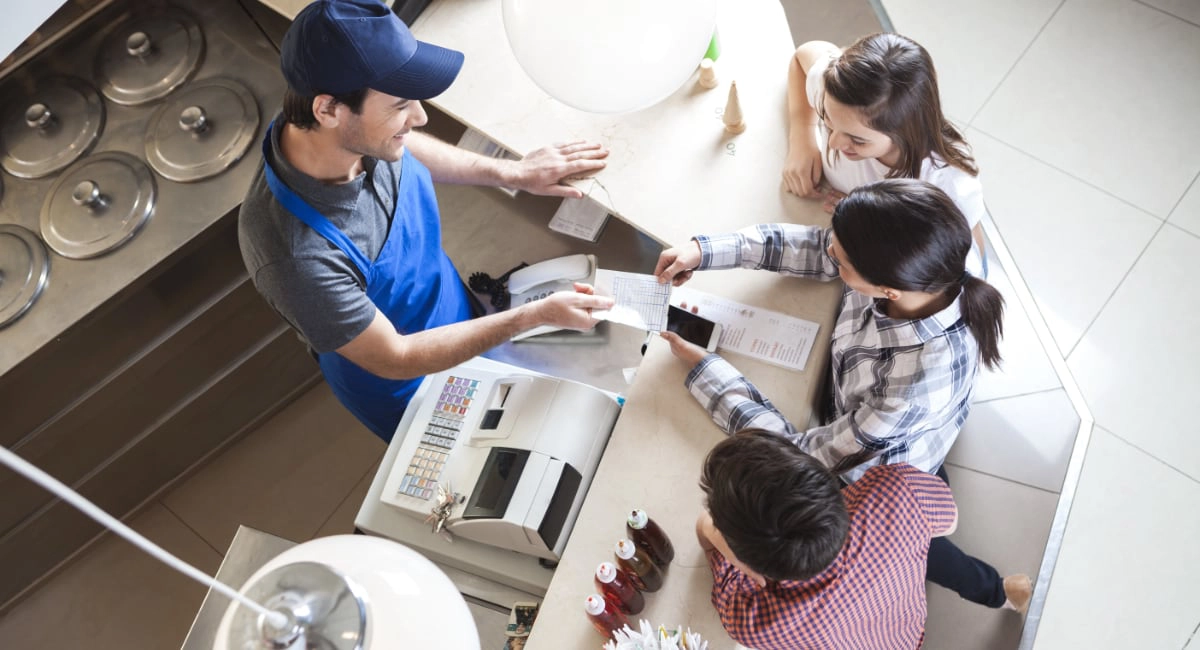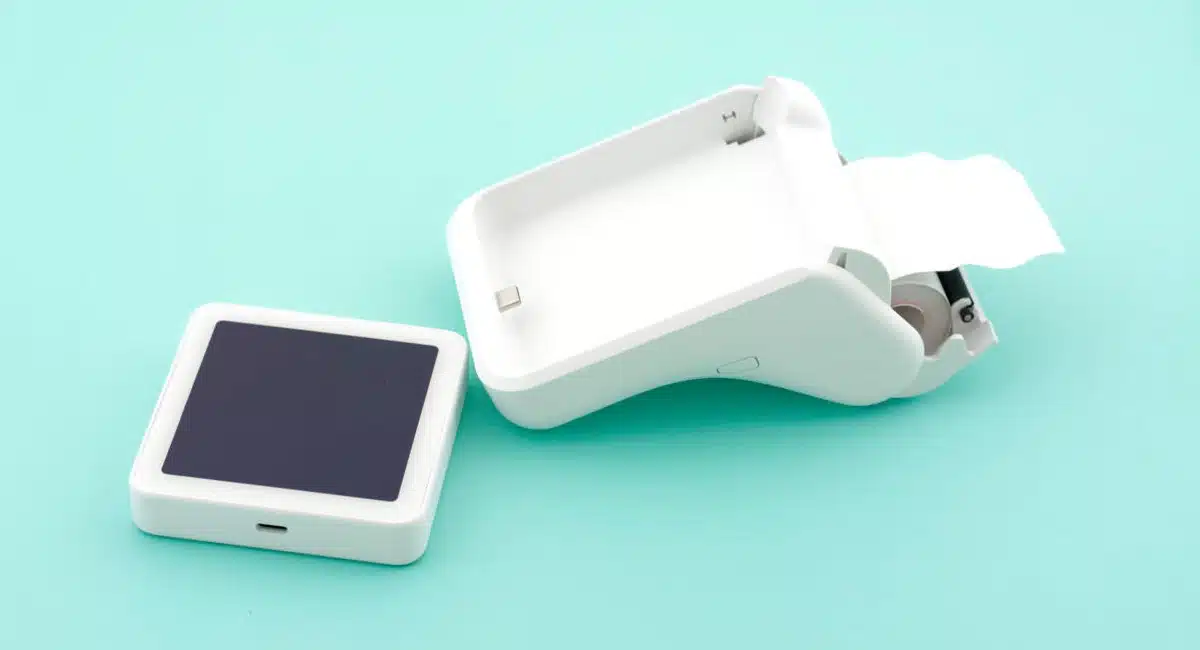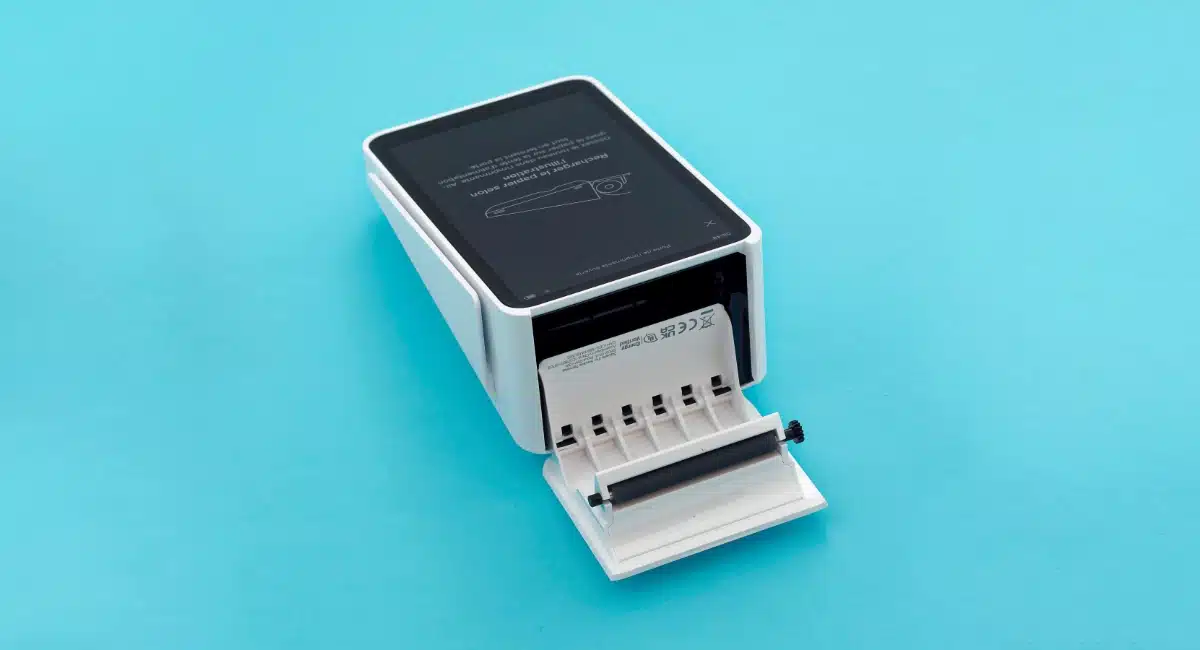Digital receipts are gaining traction among UK retailers, so should you provide them too in your business? For face-to-face customers, there’s certainly upsides to text and email receipts compared to paper receipts, but also problems.
To start with the basics, Trading Standards confirmed to us that:
It is not a legal requirement for face-to-face businesses to provide a receipt to customers in the UK.
By extension, that means there’s no rule about what type of receipt you’re obligated to provide on request. However, when a customer buys something on the internet, there has to be purchase information provided to the buyer in the form of a digital receipt, confirmation page, or similar.
Since paper receipts do not trump digital receipts in regards to the law, let us consider the things that would be influenced by your decision to choose one over the other.
Why shops are moving away from paper receipts
The main issue of paper receipts is the toxic chemical Bisphenol A (i.e. BPA) used in thermal receipt paper, which are the smooth, shiny receipts from thermal heat printers and most card machines. BPA is absorbed through the skin and accumulates in the body over time, making it especially bad for shop workers touching till receipts all the time. The chemical is known to affect hormones and increase the likelihood of heart diseases and several other health issues.
The BPA also means you cannot recycle the paper, leaving it for landfill instead. It is possible to get recyclable, non-toxic receipt paper, but traditional card terminals and low-cost card readers tend to mostly be compatible with BPA-containing thermal paper.
As many shop workers can also testify to, customers often lose their paper receipts, the print can fade, or the receipt is ruined in the wash. Not to mention: receipt paper and printers cost extra, as opposed to digitised receipts that only need an internet connection and digital receipt function in the POS software.
Maintaining privacy and GDPR with digital receipts
Despite the good intentions, digital receipts are not perfect solutions either. Just think: you’re in a busy store and just paid for an item, then you’re asked for your email address or phone number. Do you want to share that to a stranger, and in a rush so the next person can pay for their stuff? How do you know the shop isn’t going to bombard you with marketing emails or sell your contact details?
Since General Data Protection Regulation (GDPR) was enforced last year, consumers should be able to trust that stores abide by certain data privacy rules. Businesses are not allowed to use contact details for marketing messages – or anything else – unless the customer deliberately consented to it.
In other words, you have to make it very clear to customers if you intend to use their contact details for anything other than the thing they consented to, i.e. receiving a receipt from you for the purchase they just made.
But after the long pre-GDPR age, customers often get suspicious when a business asks for personal contact details, even for something as simple as a receipt. You can get around this fear by having a go-to explanation for what it’s used for, even put up a sign at the till point to state exactly what the phone number or email address is used for: to send a receipt only.

Your staff should be prepared for scenarios where the customer feels vulnerable providing personal details in front of a queue.
How receipts impact queues and checkout efficiency
Another worry is checkout efficiency. With paper receipts, no contact details are needed, so all you have to do is wait a few seconds for it to print, and off the customer goes. This can speed up long queues so more people can be served.
The most promising solutions involve minimal effort from the customer’s and retailer’s sides, which mobile wallets and automatic receipt generation can accomplish.
In contrast, digital receipts are sent to an email inbox or phone number, which has to be communicated first. This means dazing the customer when asking to provide personal information in plain sight while standing at the front of a queue under the watchful eyes of the till assistant. Until shoppers get used to this, it can lead to some semi-awkward encounters.
Newer e-receipt systems, however, seek to eliminate this issue so it requires no or minimal input from customers to get an electronic receipt.
For example, Barclays has launched a beta app called Launchpad, which is similar to their regular banking app but with more features. If you activate the digital receipts function (powered by Flux), it creates and stores digital receipts for things you’ve bought with your Barclays debit card from stores participating in Flux’s system. Launchpad is still in the test phases, but it’s one of several apps now storing receipts automatically for certain purchases.
The card reader company iZettle has another approach. Once a customer has a receipt emailed the first time, iZettle safely stores the email address in their system, linked to that specific debit or credit card. The next time the customer pays via any iZettle card reader, it then knows what email address is linked to the card, enabling you to send it without asking for contact details again.
Implications for business accounting
For companies and sole traders, a major reason for receipts is the need to record business expenses. In the past, paper receipts were a necessity to claim back money for such expenses, or just as legal backup if necessary to prove the transactions took place.
Now that online accounting is the norm, companies use cloud systems requiring employers or business owners to submit receipts electronically to the accounting system. If they only have a paper receipt, they need to digitise it by scanning or taking a picture of it and submitting it to the system. There are even tools for this, like the apps Xero Expenses and Receipt Bank that both allow you to snap a picture of individual receipts.
In such cases, having a digital receipt is easier. Many accounting systems have a dedicated email address for receipt submission, so you only need to forward an email receipts to record it. Based on machine learning recognition, the system will subsequently attempt to categorise the expense.
It is therefore no longer required for many businesses to obtain paper receipts. Some companies still use traditional, paper-based accounting systems, but if they get an email receipt, they can print it from an office printer for their records.

Many startups in London don’t print paper receipts, especially mobile businesses with younger clientele. Photo: Emily Sorensen, Mobile Transaction
What should you do in your business?
Many still prefer paper, but that doesn’t mean people will be aversive to email or text receipts. As a face-to-face merchant, you’re not obligated to provide a paper receipt, so just sending electronic receipts is an acceptable arrangement.
In the end, most businesses will do what’s most affordable without hassling the customer too much. The most promising solutions involve minimal effort from the customer’s and retailer’s sides, which mobile wallets and automatic receipt generation can accomplish.
Today, many are also considering their environmental footprint. It’s a fine line to draw, but you know your situation best. So consider this:
- Do your customers tend to insist on a paper receipt?
- Would there be significant negative implications if you said you only provided digital receipts?
As a face-to-face merchant, you’re not obligated to provide a paper receipt, so just sending electronic receipts is an acceptable arrangement.
If the answer is no to both, the better thing for the environment, employees and profit margins (because you don’t spend money on receipt printing) is to go paperless. If the answer is yes to one or both questions, you may still want to use a receipt printer. To sum up pros and cons:




